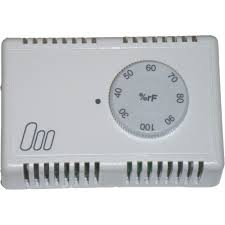Since the implementation of fan-forced sub floor ventilation systems the question does arise should humidistats be used in sub floor ventilation installations.
 This moderator has been considered but found that it is too sensitive for sub floor environments even if set on its lowest setting, sub floor humidity levels do not reduce to the extent for the humidistat to intercede, thus not deactivating the sub floor ventilation systems. Deactivation is very important especially for the night time to ensure that damp air is not drawn into the sub floor area when foggy, dewy or frosty conditions exist outside, especially from autumn to the first half of spring.
This moderator has been considered but found that it is too sensitive for sub floor environments even if set on its lowest setting, sub floor humidity levels do not reduce to the extent for the humidistat to intercede, thus not deactivating the sub floor ventilation systems. Deactivation is very important especially for the night time to ensure that damp air is not drawn into the sub floor area when foggy, dewy or frosty conditions exist outside, especially from autumn to the first half of spring.
Does this mean that sub floor humidity level do not reduce by the utilisation of fan-forced sub floor ventilation systems? This is not the case as follow up on these types of installation are visibly seen upon inspection of the sub floor environment and the improved air quality inside the dwelling in the reduction of mould propagation and an apparent improved air quality condition. This is done by a sub floor ventilation installation follow up or by the frequency of the pest inspection which is done by a qualified pest / sub floor ventilation technician.
We have found that timers are a better choice in controlling the sub floor ventilation systems as the duration of time can be increased if needed or decrease if the presence of dryness occurs.
The use of timers have a greater scope than that of humistats.
